Abstract
Reproductive failure of a number of fish-eating birds was observed on the Great Lakes in the mid-1960s to mid-1970s. The herring gull (Larus argentatus) has been used as the primary monitoring species. The low hatching success observed in this species on Lake Ontario in the mid-1970s was due to loss of eggs and failure of eggs to hatch. Egg exchange experiments demonstrated that this was due both to the incubation behavior of adults and to direct embryotoxic effects. Decrease of nest attentiveness was demonstrated using telemetered eggs, but attempts to reproduce the embryonic effects by injection of pollutant mixtures into eggs were not successful. Reproductive success improved rapidly during the late 1970s and was normal by the end of the decade. Recent studies have focused on cytogenetic and biochemical changes and detailed analytical chemistry of residues. No changes in the rate of sister chromatid exchange over values determined in coastal colonies were observed. Elevation of hepatic aryl hydrocarbon hydroxylase activity, levels of highly carboxylated porphyrins, and changes of thyroid function have been found. The geographic pattern of these changes indicates that they are caused by xenobiotics, but it has not been possible to relate the changes to a specific chemical.
Full text
PDF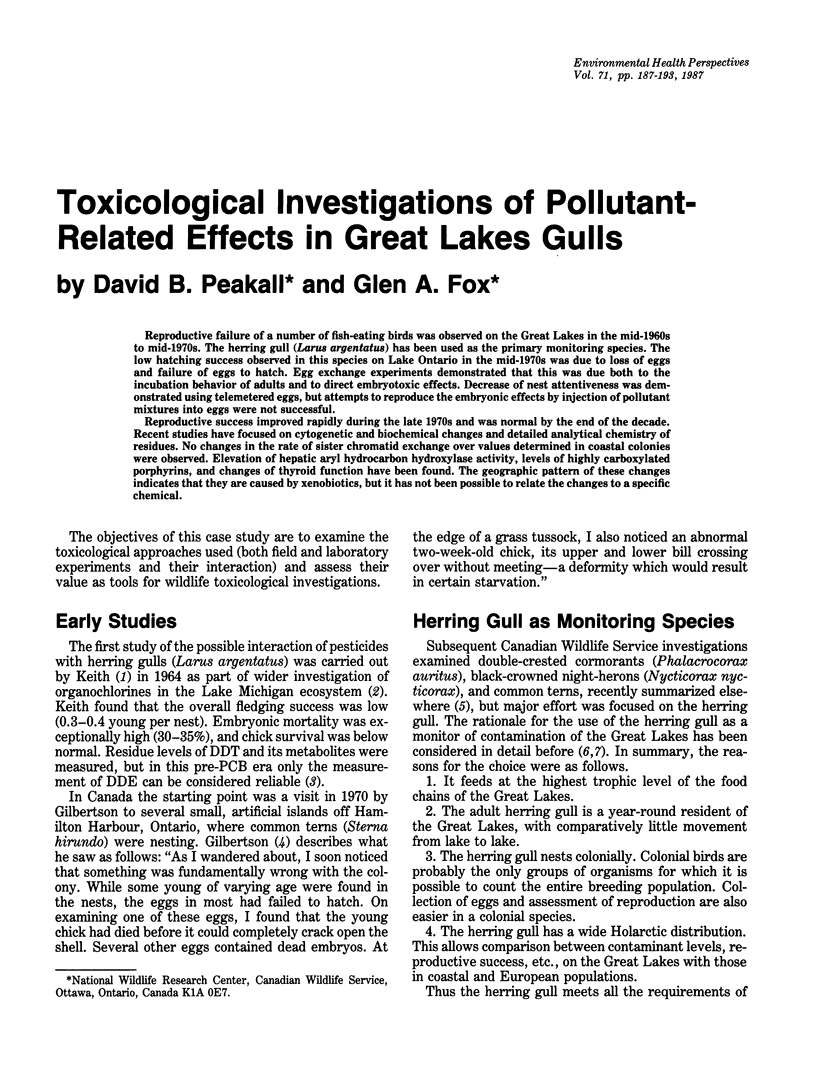
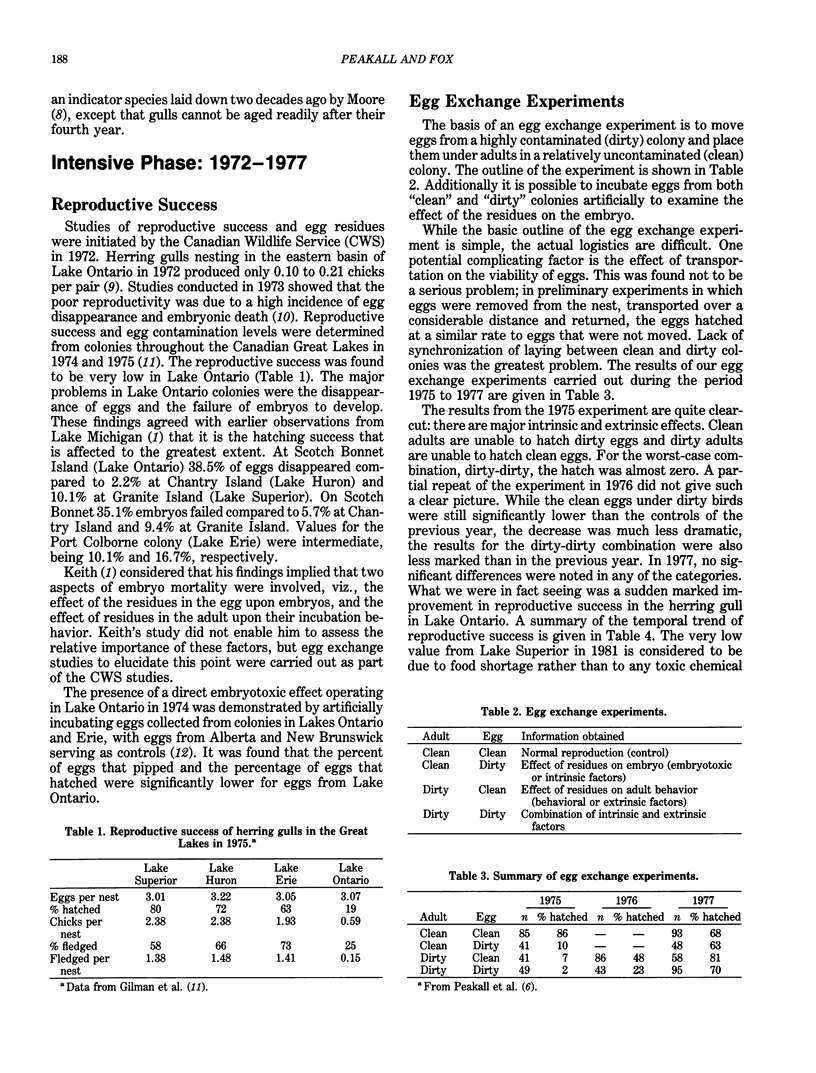
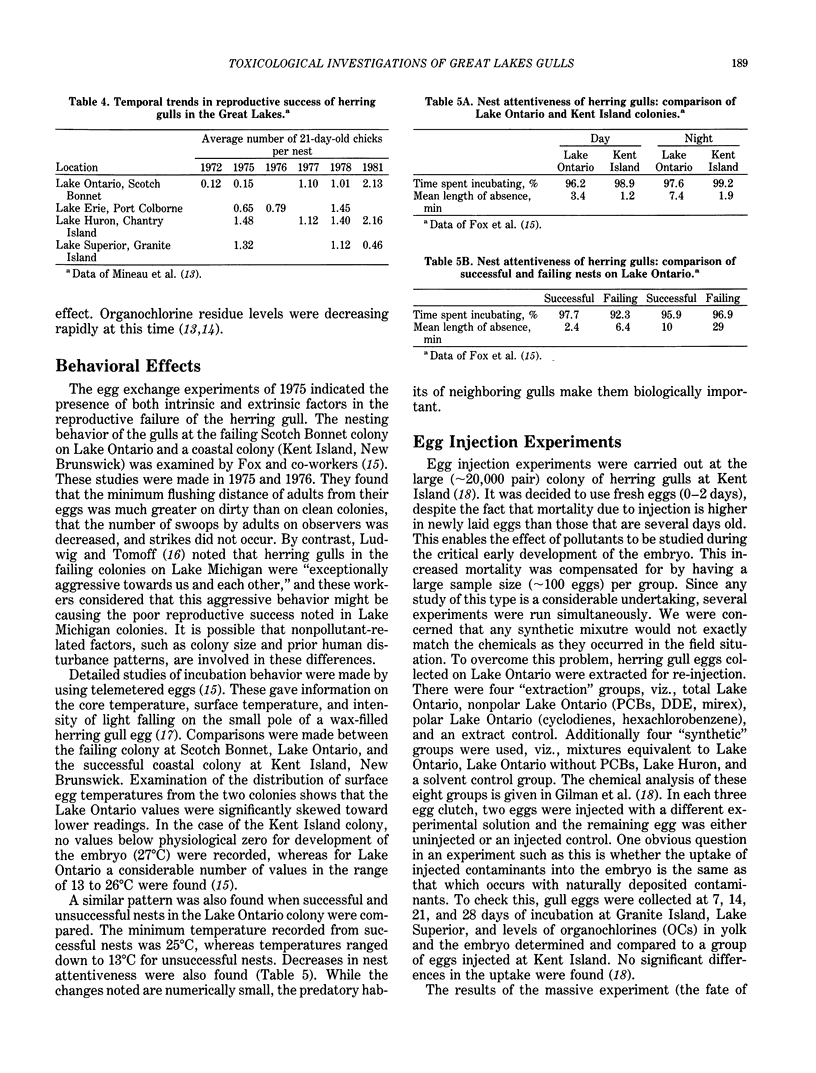
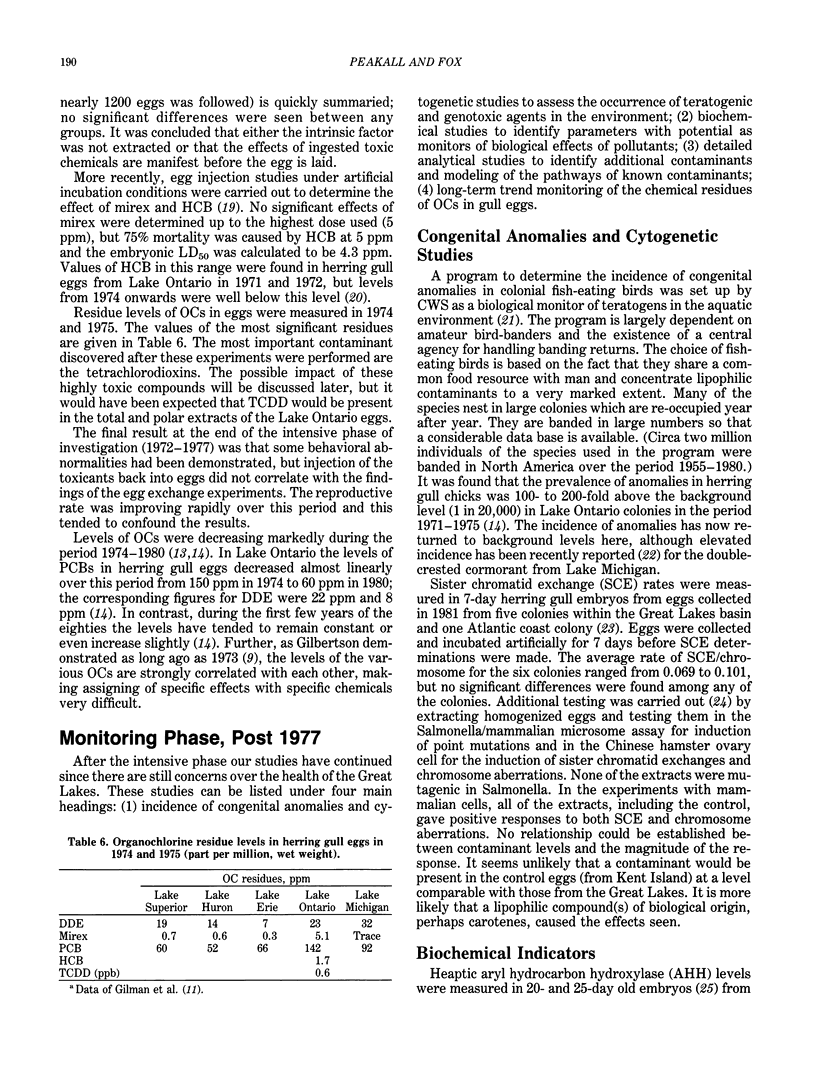
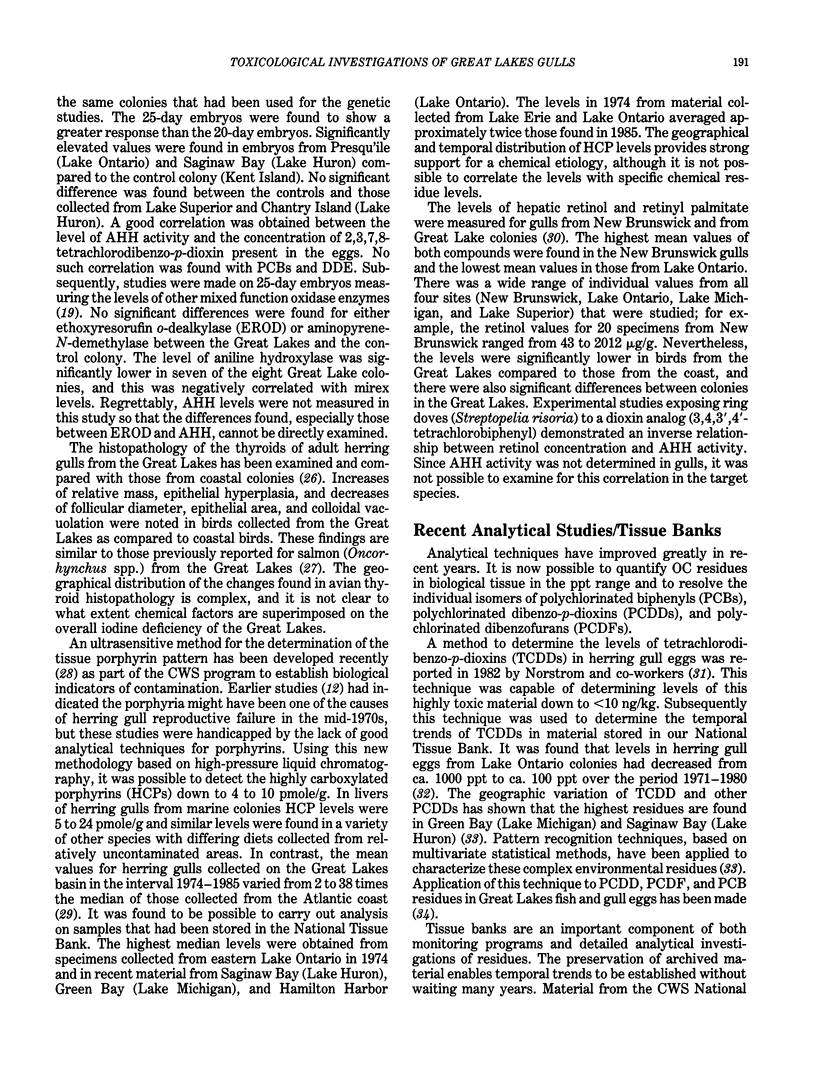
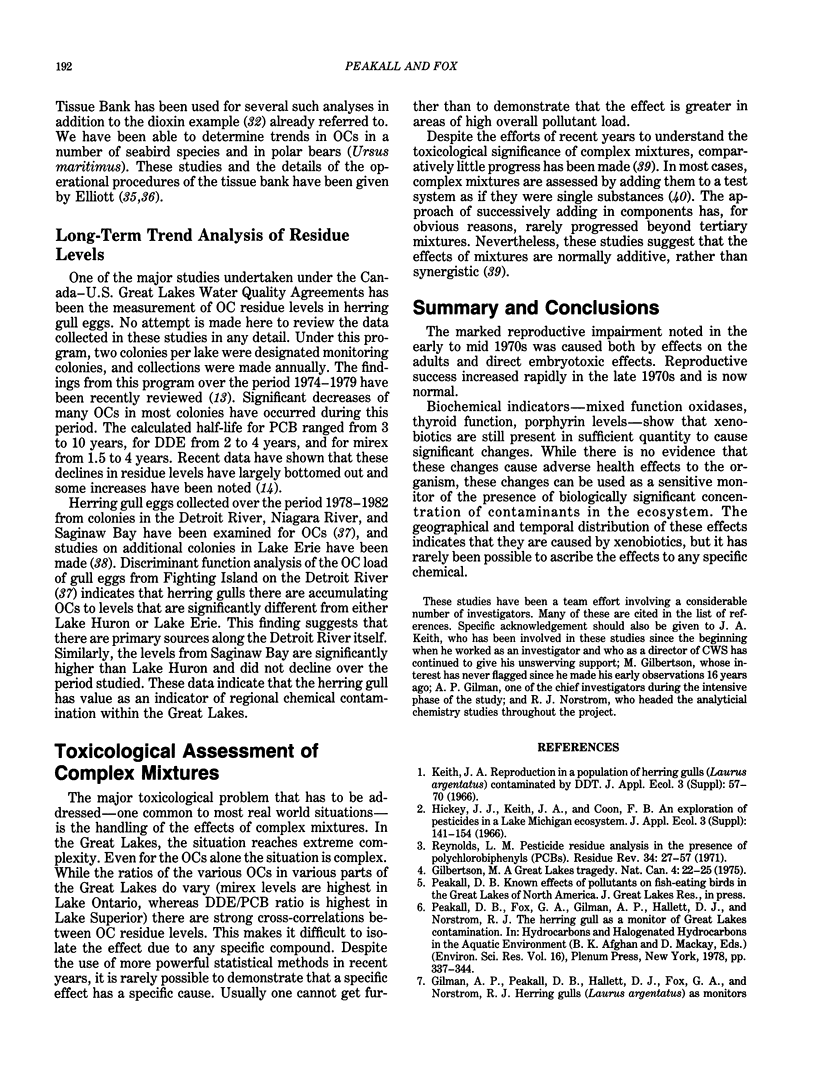
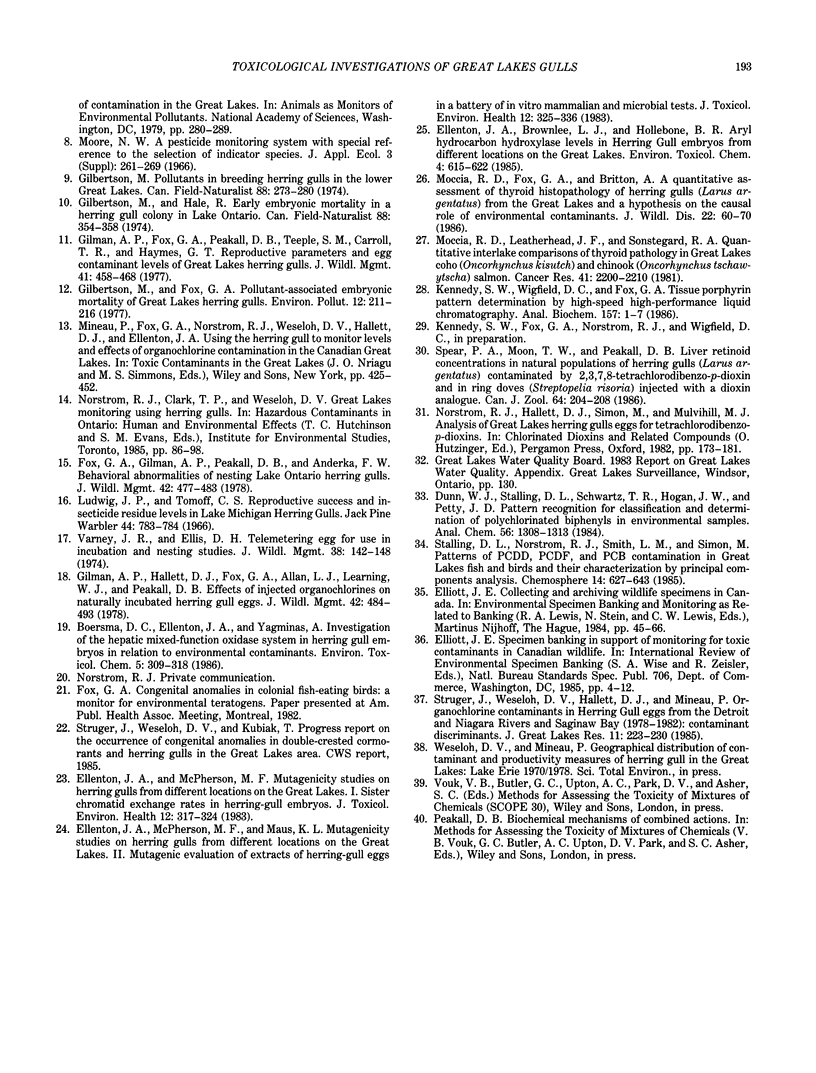
Selected References
These references are in PubMed. This may not be the complete list of references from this article.
- Ellenton J. A., McPherson M. F., Maus K. L. Mutagenicity studies on herring gulls from different locations on the Great Lakes. II. Mutagenic evaluation of extracts of herring-gull eggs in a battery of in vitro mammalian and microbial tests. J Toxicol Environ Health. 1983 Aug-Sep;12(2-3):325–336. doi: 10.1080/15287398309530430. [DOI] [PubMed] [Google Scholar]
- Ellenton J. A., McPherson M. F. Mutagenicity studies on herring gulls from different locations on the Great Lakes. I. Sister chromatid exchange rates in herring-gull embryos. J Toxicol Environ Health. 1983 Aug-Sep;12(2-3):317–324. doi: 10.1080/15287398309530429. [DOI] [PubMed] [Google Scholar]
- Kennedy S. W., Wigfield D. C., Fox G. A. Tissue porphyrin pattern determination by high-speed high-performance liquid chromatography. Anal Biochem. 1986 Aug 15;157(1):1–7. doi: 10.1016/0003-2697(86)90187-9. [DOI] [PubMed] [Google Scholar]
- Moccia R. D., Fox G. A., Britton A. A quantitative assessment of thyroid histopathology of herring gulls (Larus argentatus) from the Great Lakes and a hypothesis on the causal role of environmental contaminants. J Wildl Dis. 1986 Jan;22(1):60–70. doi: 10.7589/0090-3558-22.1.60. [DOI] [PubMed] [Google Scholar]
- Moccia R. D., Leatherland J. F., Sonstegard R. A. Quantitative interlake comparison of thyroid pathology in Great Lakes coho (Oncorhynchus kisutch) and chinook (Oncorhynchus tschawytscha) salmon. Cancer Res. 1981 Jun;41(6):2200–2210. [PubMed] [Google Scholar]
- Reynolds L. M. Pesticide residue analysis in the presence of polychlorobiphenyls (PCB's). Residue Rev. 1971;34:27–57. doi: 10.1007/978-1-4615-8470-4_2. [DOI] [PubMed] [Google Scholar]


